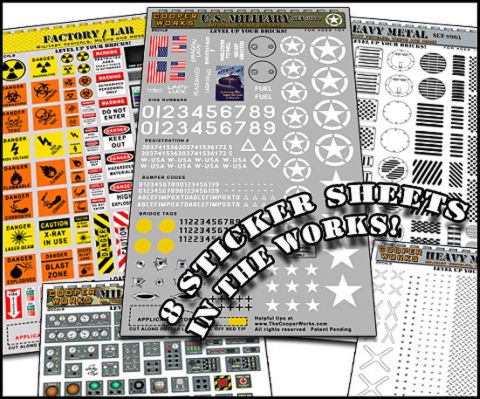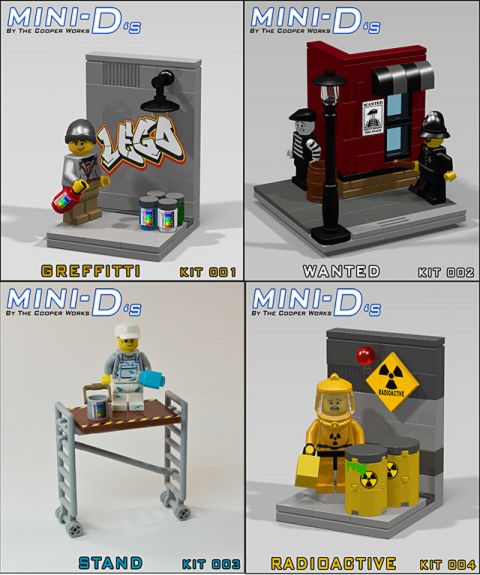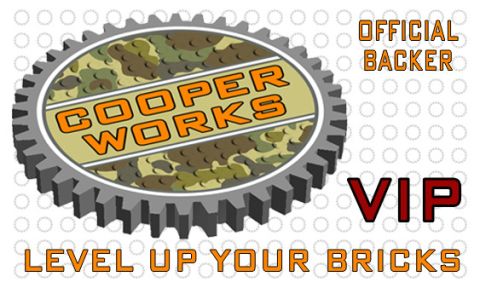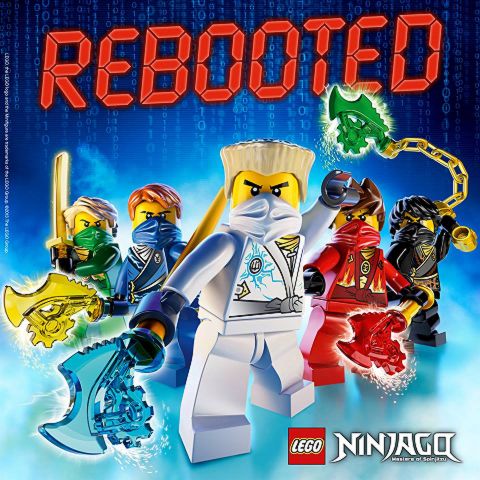Today I would like to introduce you to a LEGO project on Kickstarter that you might find interesting. As you are probably aware of already, Kickstarter is a crowd-funding platform where people can raise funds for new projects and business ideas. There have been quite a few LEGO projects that have been submitted to Kickstarter – some of them met their fundraising goals and turned into successful businesses, some didn’t. We have featured a few of them here in the past (see links at the end of this posts).

This latest LEGO project on Kickstarter should appeal to LEGO space and LEGO military fans, as well hobbyists who are used to very detailed models, by providing very detailed stickers and decals. The venture is called The Cooper Works Project and is run by Jeff Churill, who is a modeler and LEGO fan himself. Below I will let him introduce his project to you, and if you like it, links will be provided with further info. 🙂

“Ever since I was a kid I’ve been into LEGO building and plastic model building, but never both at the same time. As a modeler what I enjoyed most was the great detail you could achieve, something you just can’t get out of LEGO. Although I enjoy both hobbies equally, I’ve always missed the lack of detail on LEGO creations.”
“There are a lot of minifigure customizers, but I felt that the brick side of things is falling way short on detail. So I thought to bring the detail of modeling and the building possibilities of LEGO together. I started messing with decals (common in the modeling world), experimenting with different ideas and seeing how far I can push them. As a result I now look at LEGO differently, and I believe with adding enough details by using decals, they can come to the level of true models. Even my LEGO building techniques changed since using decals. I now treat decals the same way I treat LEGO bricks; how can I build these decals into my creation to help bring it to life? I truly build with a modeling frame of mind, and that’s what I hope to share with you through this project.”

“At this point I’m in the early stages of bringing new decals to you and your LEGO creations. These stickers will put that finishing touches on your already great LEGO models. I already have some sticker-sheets either ready, or in the works, and I will continue to tweak, modify and perfect them as we go. I also have some ideas for future stickers related to more military, sci-fi, space and diesel/steampunk themes.”

“But making stickers is actually not that easy. After a year of research and development, now I’m at a point to bring the project to the next level. The main expense at this point in the printing process. Most decal-sheets are taking advantage of new technology for printing. It’s cheaper than older technology but it does have its limitations. So some of the more complicated decal sheets will require cutting dies to be made, which are very expensive. The other factor is the minimum quantity of sheets required to be printed, which does add up quickly.”

“If you are interested in this LEGO project, please consider supporting it. I have set up various levels of support possibilities and they all come with some rewards and perks. There are sticker-sheets, mini-kits and mini-models available for those who help fund the project. You can read more about them at our Kickstarter page: The Cooper Works Project on Kickstarter. You can also visit our website at TheCooperWorks.com.”

So what do you think of these LEGO stickers and decals? If you have any questions, comments or suggestions for Jeff, feel free to share in the comment section below! 😉
And you might also like to check out the following related posts:













